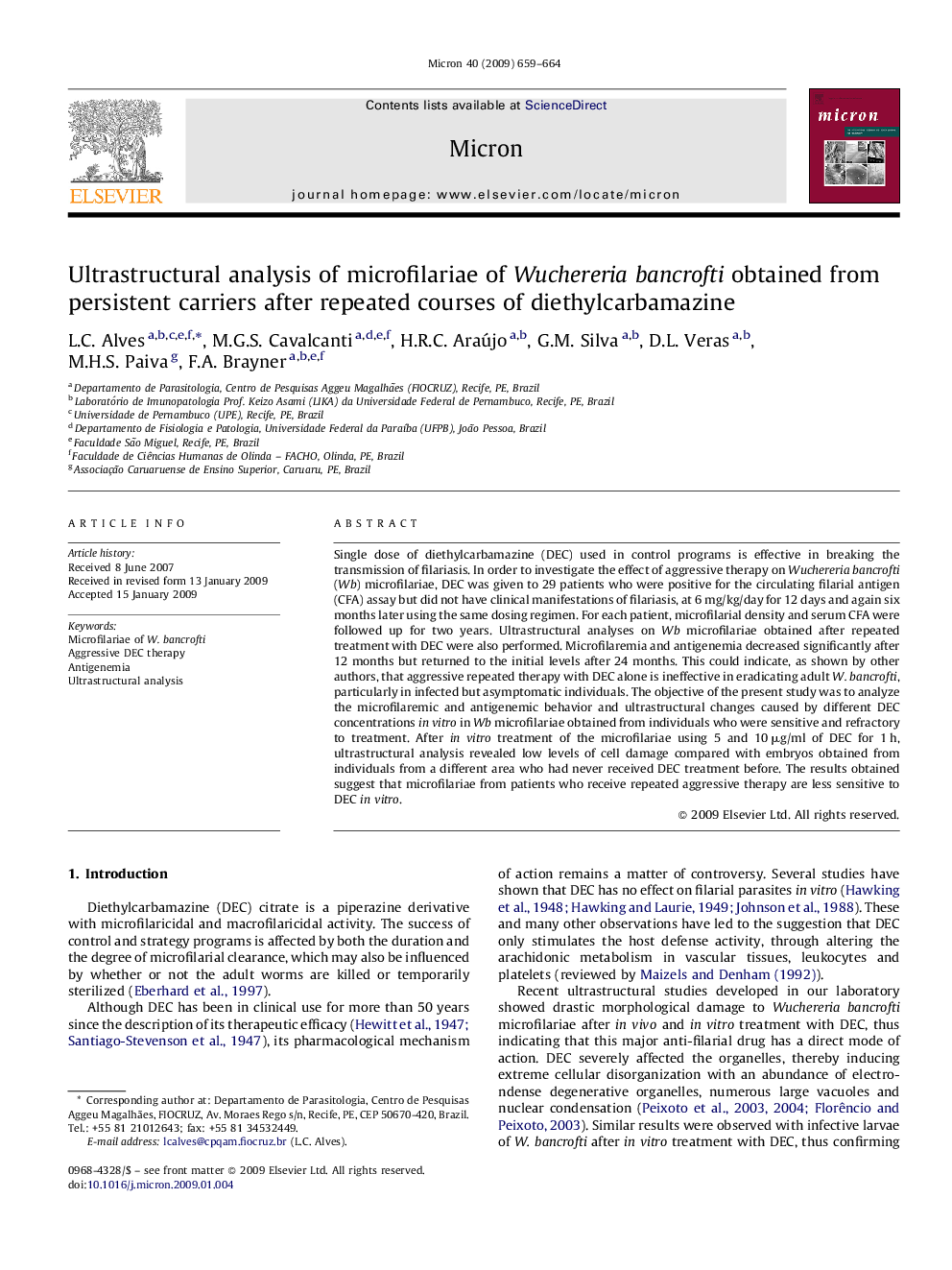| Article ID | Journal | Published Year | Pages | File Type |
|---|---|---|---|---|
| 1589613 | Micron | 2009 | 6 Pages |
Abstract
Single dose of diethylcarbamazine (DEC) used in control programs is effective in breaking the transmission of filariasis. In order to investigate the effect of aggressive therapy on Wuchereria bancrofti (Wb) microfilariae, DEC was given to 29 patients who were positive for the circulating filarial antigen (CFA) assay but did not have clinical manifestations of filariasis, at 6 mg/kg/day for 12 days and again six months later using the same dosing regimen. For each patient, microfilarial density and serum CFA were followed up for two years. Ultrastructural analyses on Wb microfilariae obtained after repeated treatment with DEC were also performed. Microfilaremia and antigenemia decreased significantly after 12 months but returned to the initial levels after 24 months. This could indicate, as shown by other authors, that aggressive repeated therapy with DEC alone is ineffective in eradicating adult W. bancrofti, particularly in infected but asymptomatic individuals. The objective of the present study was to analyze the microfilaremic and antigenemic behavior and ultrastructural changes caused by different DEC concentrations in vitro in Wb microfilariae obtained from individuals who were sensitive and refractory to treatment. After in vitro treatment of the microfilariae using 5 and 10 μg/ml of DEC for 1 h, ultrastructural analysis revealed low levels of cell damage compared with embryos obtained from individuals from a different area who had never received DEC treatment before. The results obtained suggest that microfilariae from patients who receive repeated aggressive therapy are less sensitive to DEC in vitro.
Keywords
Related Topics
Physical Sciences and Engineering
Materials Science
Materials Science (General)
Authors
L.C. Alves, M.G.S. Cavalcanti, H.R.C. Araújo, G.M. Silva, D.L. Veras, M.H.S. Paiva, F.A. Brayner,
